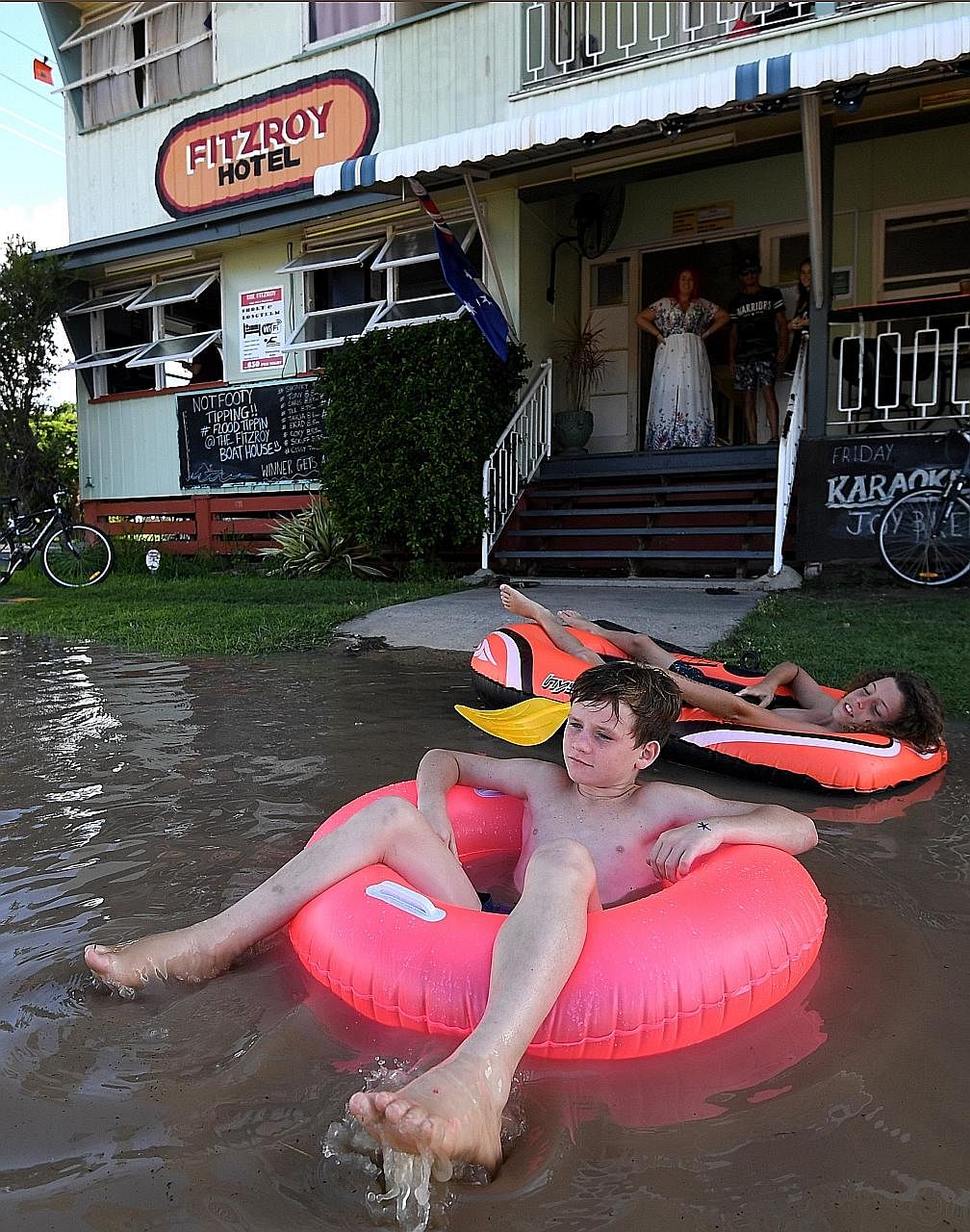Australia's week of disastrous weather is set to send shockwaves across the nation's economy after causing billions of dollars in damage to buildings, crops, rail lines, roads, and the mining and tourism sectors.
As heavy rain and flooding continued to wreak havoc across the states of Queensland and New South Wales yesterday, analysts said the damage will affect global coal prices and hamper Australia's overall economic growth.
ANZ Bank economist David Plank said Cyclone Debbie could shave up to 0.3 percentage point off Australia's economic growth for the June quarter. But he said the overall impact is not likely to be as bad as during Cyclone Yasi, a powerful cyclone that hit northern Queensland in 2011. "We think a worst-case scenario for (gross domestic product) is a reduction of 0.3 percentage point, though it will most likely be less," Mr Plank told The Australian Financial Review.
Australian freight rail operator Aurizon revealed on Monday that vital rail links that are used to export coal from Queensland were badly damaged and will be closed for repairs. Queensland supplies about 50 to 60 per cent of the world's seaborne exports of coking coal, used for steel production.
Aurizon said its Goonyella rail line, which carries about half of Queensland's coal exports, was affected by landslips and will take about five weeks to repair.

Commodity analyst firm S&P Global Platts said the disruption to the rail lines could affect as much as 20 million tonnes of coal exports - the same amount that was affected by Cyclone Yasi. This could amount to 5 per cent of the global supply and about A$3 billion (S$3.2 billion) in lost revenue for the nation's miners.
"Cumulatively, this (rail line disruptions) could potentially disrupt approximately 15 million to 20 million tonnes of met coal exports, according to three separate mining sources on Monday, and could have significant implications on global seaborne met coal supply," said a briefing note obtained by ABC News.
The strong winds and rains have also badly affected crops in central and northern Queensland.
Canegrowers, a peak group representing most of Australia's sugarcane growers, estimated last Friday that A$150 million worth of crops had been lost.
The Queensland Farmers' Federation said that at least A$100 million worth of other crops had been lost, including tomatoes, capsicums and mangoes.
The area around Bowen - known as the "food bowl of the north" - produces an estimated 95 per cent of Australia's winter tomato and capsicum supplies.
The cyclone has also badly affected tourism in Queensland, including damaging several resorts in the Whitsunday Islands, which are popular with visitors wanting to see the Great Barrier Reef. Experts said the tourism industry will take months, or even years, to recover.
The Insurance Council of Australia said yesterday that insurers had already received 28,000 damage claims, with losses estimated at A$306 million.
